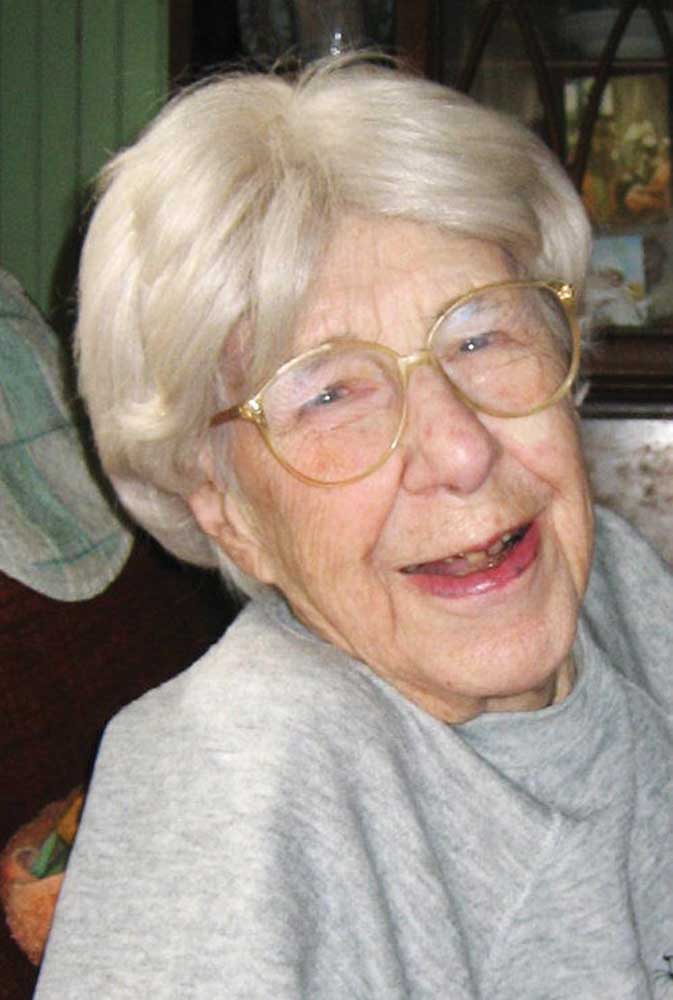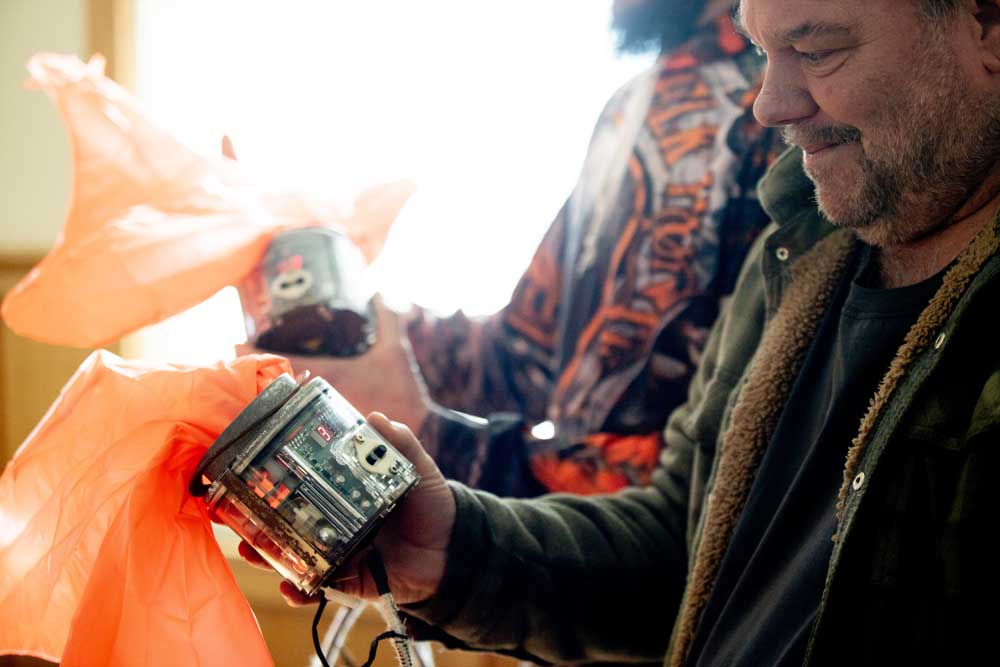Saints or Sinners? Characters of Pacific County: Marvelous one-of-a-kind Verna Oller
Published 9:54 am Thursday, October 31, 2024

- In 2007, 95-year-old Verna Oller sat in her favorite chair and talked about her plans for the future — including her dream for her secret accumulation of millions that she hoped to give to the City of Long Beach for a swimming pool “for all ages.”
Verna Smith Oller 1912-2010
Verna Smith Oller lived for almost a century. Like many of her generation, she saw more changes in her lifetime than would have been possible had she been born even a half century earlier. But what made Verna one-of-a-kind was her quiet fortitude in sticking to the values she grew up with — hard work, frugality, helpfulness and determination. It didn’t hurt, either, that she had a great sense of humor.
When I first met her, she was 95. She still split and stacked her own wood, did her own gardening and housework, and took a daily ration of food to the two horses boarding in the field beyond her yard. She lived in the house that she and her husband had built themselves in 1934. Verna’s transportation was by Dial-a-Ride, her main meal each day was taken at senior-discount nutrition service PACE, and she kept apprised of the news by reading several day-old newspapers discarded by the Ilwaco Library. And, typical of her generosity, when she noticed that a fellow-passenger on the Dial-a-Ride bus was interested in the sports news, she made sure to find sports pages among those discarded papers, especially for him.
Verna was born just north of Long Beach at the northwest corner of Cranberry Road and the old narrow-gauge railroad line. She remembered having one pair of shoes. “They were high-topped with buttons. We had to use a buttonhook to put them on. Now that’s something you don’t see anymore! I remember rolling back the soles on our shoes and putting pasteboard inside to make them last longer. We wore shoes when we went to school and to church and then we had to wear long stockings, too. I much preferred going barefoot and bare legged.
“We could live pretty well for not much money. There was no limit on the clams or crabs you could get. There were lots of berries — wild elderberries, strawberries, blackberries, salmonberries. And the blueberry bushes grew about six feet tall, mostly a little north of Cranberry. There were also plenty of mud clams which we could get by walking about a mile and a half over to the bay. And, all the permanent people had gardens and chickens, so everyone fared pretty well.”
‘We could live pretty well for not much money. There was no limit on the clams or crabs you could get. There were lots of berries — wild elderberries, strawberries, blackberries, salmonberries. And the blueberry bushes grew about six feet tall, mostly a little north of Cranberry.’
From the time she could add to the family coffers, she worked. She picked cranberries, shucked oysters, shook crab, and waitressed — and was, above all, frugal. When she married in 1932, she and her husband built a small house at a cost of $700.65 and until his death in 1964, any of their “surplus” money and Verna’s first small inheritances went into savings and loan accounts and Series EE federal savings bonds. “He didn’t believe in the stock market,” she told me in a 2007 interview.
Both the Ollers worked hard. When they married, Ed was working for Pacific County for $3.50 for an eight-hour day. On January first that year they had $3 cash on hand, $46.75 cash in the bank, and “$20 worth of coal oil, paid for.” From Sept. 14, 1934 through Jan. 16, 1935, Ed worked as a pile driver on the North Jetty getting $9.60 per day. In 1941 he went to work for the Bear River Logging Co. at 75 cents an hour and in April that year he began working for Northern Oyster Co. at $2.30 per hour.
Meanwhile, Verna worked weeding, picking, and sorting cranberries. Then, in October 1942, the manager from the Willapa Oyster Co. offered her a steady job — labeling cans at 50 cents an hour! “And a woman that lived just south of me would pick me up and bring me home for 10 cents a day,” she remembered. “I had it made!”
She long served as financial secretary for the Shoalwater Bay Oyster Workers’ Union, Local No. 14.
Sometimes she added to her bank account by doing some babysitting for friends. Long-time resident Carolyn Glenn told about going to pick up her kids at Verna’s the first time she baby-sat them and found that all the windows were wide open, with ladders leaning up against some of them. “Verna and her sister — both in their late 70s by then — were playing Cops and Robbers with the kids, going in and out the windows and doors and up and down the ladders and having a wonderful time.”
“Another time,” Carolyn said, “Verna brought a gift to young Guy for his seventh or eighth birthday. The box was wrapped in the funny papers and when he opened it, there was the biggest bullfrog you’ve ever seen! All the kids thought it was the best present ever!”
It wasn’t until 1979, 15 years after Ed’s death, that Verna began investing. Through trial and error, she finally decided in confining her investments to mutual funds. She did her record keeping in a three-hole, spiral-bound notebook. Her neat penmanship filled the pages of four slim volumes and at the time of our discussion, she was continuing to record her investment activities — amounts and dates when she bought or sold. Thanks in part to a substantial boost from a bequest by her sister, when Verna died on May 10, 2010, her net worth was $4.5 million — less than the $5-plus million it had been worth before a recent economic turn-down, but a worthy sum, nonetheless.
Verna was very clear about her plans for the money. “At first, I thought about leaving it for a library for Long Beach. But I think a swimming pool would benefit more people. You can’t swim in the ocean any more. It isn’t safe. But swimming is good for everyone, young and old alike.”
“I’m leaving $500,000 to the Ocean Beach School District for students and teachers, and another $500,000 to the Ocean Beach Education Foundation. The rest is for the swimming pool. But it’s just for the building,” she cautioned. “The city will have to maintain it themselves.”
Verna was adamant that no one know about her money or her plans for a Long Beach swimming pool.” They’ll know after I’m dead,” she told me. “While I’m alive it’s no one’s business.”
Verna Smith Oller was, indeed, one of a kind.
She lived in that snug little house for the next 65 years and continued to work until about a year before her death, when she decided it was time to relax. She checked herself into an assisted living facility and paid for her care in advance. When she died, Peninsula residents were amazed to learn that she had left $4.5 million earmarked for construction of a community swimming pool. (Although a citizens’ committee ultimately decided the town wouldn’t be able to afford upkeep, staffing and other swimming pool costs, her bequest continues to provide south Pacific County residents with access to the Astoria Aquatics Center.)









